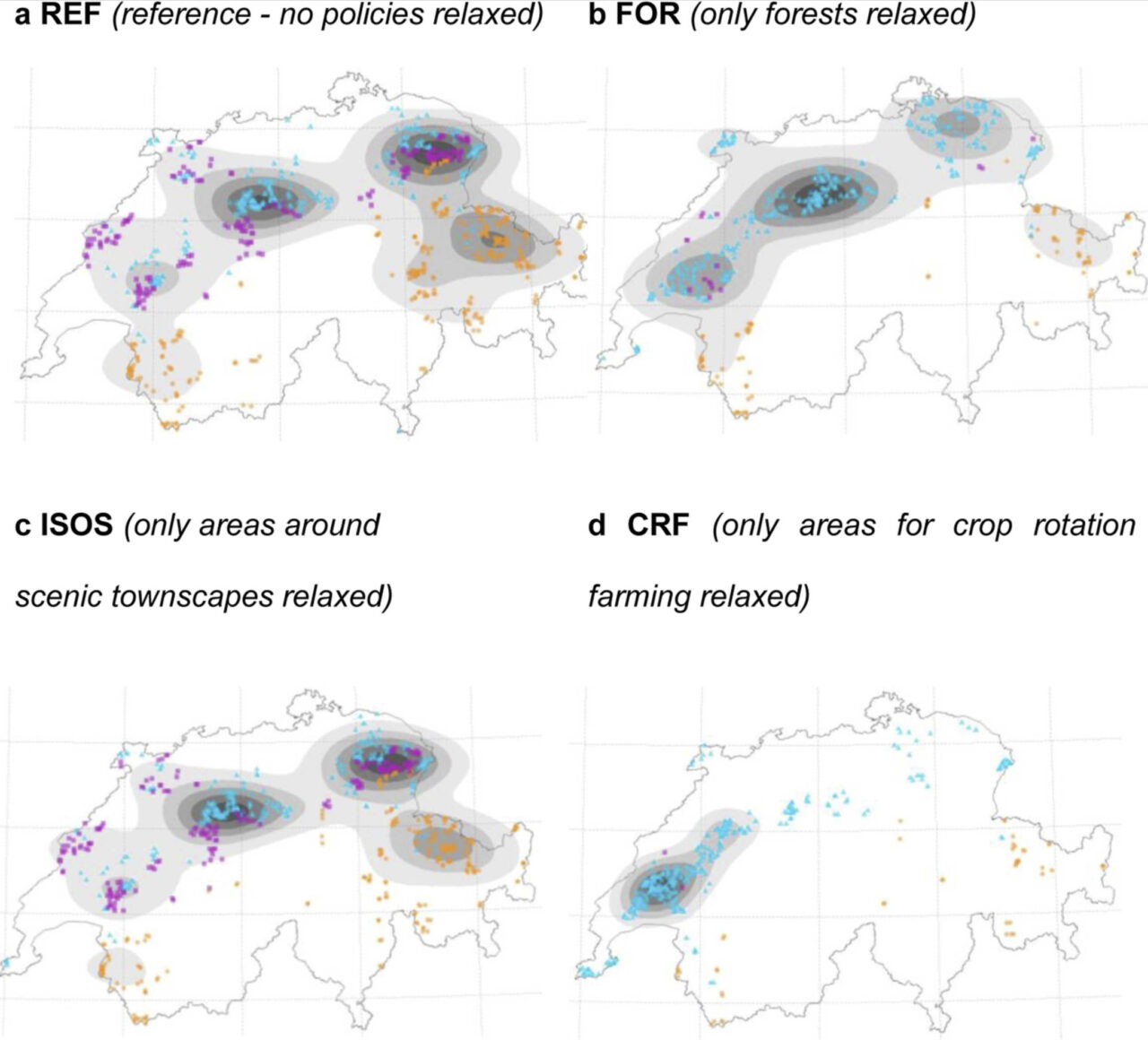
Reto Spielhofer, Jonas Schwaab, Adrienne Grêt-Regamey
2023
Full text
Artikel in den ETH-News (D und E)
Energy production from the power of wind is being increasingly promoted around the world to reach climate and energy targets and gain independence from fossil fuels. The identification of possible sites for on-shore wind energy production faces multiple challenges.
National wind energy strategies cite various physical, ecological, social and economic constraints in defining wind turbine locations. Furthermore, the acceptance of new infrastructure is highly dependent on regional and local conditions.Consequently, the design of policy guidelines that simultaneously consider various constraints and goals in a spatially explicit manner is highly challenging. To tackle this challenge, we demonstrate how a state-of-the-art evolutionary optimization algorithm can inform policy-makers in leveraging various planning policies to optimize wind energy production. We investigate the spatial and non-spatial effects of different policies considering multiple planning targets and constraints. Moreover, we analyze trade-offs between different wind turbine planning targets. Based on the results, we outline several policy implications to support the identification of development areas for wind turbines in Switzerland. The proposed optimization method enables us to better understand the national planning horizon within a regional context and vice versa.
